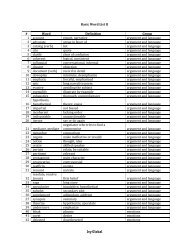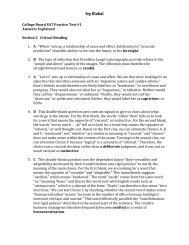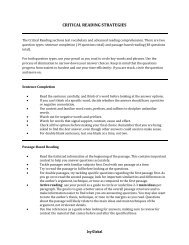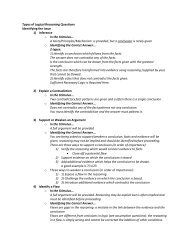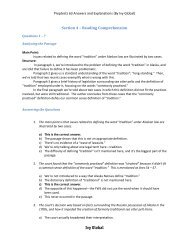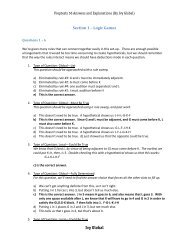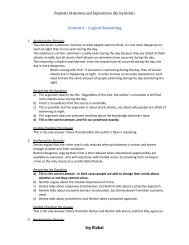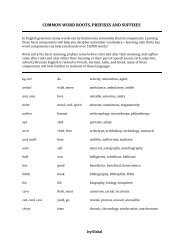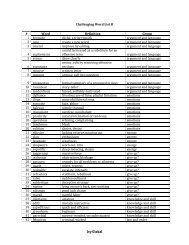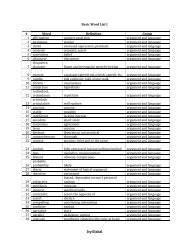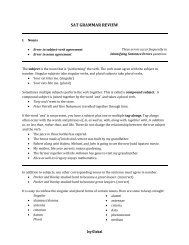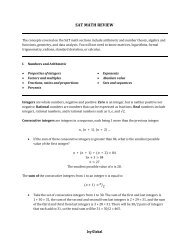Reading Comprehension Answers - Ivy Global
Reading Comprehension Answers - Ivy Global
Reading Comprehension Answers - Ivy Global
You also want an ePaper? Increase the reach of your titles
YUMPU automatically turns print PDFs into web optimized ePapers that Google loves.
Preptests 54 <strong>Answers</strong> and Explanations (By <strong>Ivy</strong> <strong>Global</strong>)25. Paragraph 1 tells us about the differences between non-cohesive and cohesive decision-makinggroups.a) There’s nothing about a need to “enforce” conformity.b) The military is one of the groups researchers studied, but there is no evidence that theyexpect conformity.c) “Inappropriate group conformity” is not discussed.d) We’re not told about the frequency of voluntary vs. involuntary conformity.e) This is the correct answer. This phenomenon is discussed in paragraph 1.26. Low cohesiveness is mentioned as a contrasting point with high cohesiveness, to demonstratehow cohesiveness is a quality of good decision-making.a) This is the correct answer.b) Groupthink hasn’t come up yet—this paragraph just examines cohesiveness.c) This paragraph doesn’t look to improve the decision-making in both groups. It just tells usthat cohesive groups are better.d) Groupthink hasn’t come up yet, again.e) Low cohesiveness is not the topic of the rest of the passage. High cohesiveness is.27. We’ll have to go straight to the answer choices.a) Paragraph 1 tells us that this is a characteristic of low cohesion groups, not high ones.b) This is the correct answer. Paragraph 1 lists this as a characteristic of highly cohesivegroups.c) It’s not the number of opinions that matter but the cohesiveness of the individuals.d) This is not mentioned nor supported by the passage.e) Cohesion is a requirement for groupthink—this cannot be true.<strong>Ivy</strong> <strong>Global</strong>




